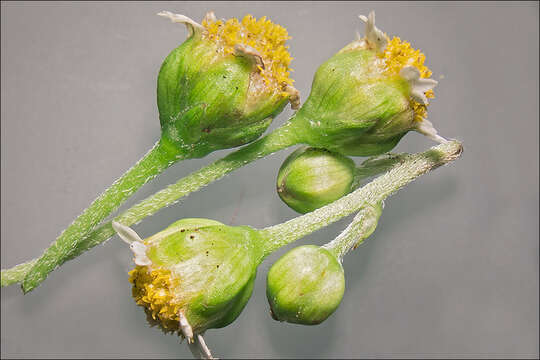Galinsoga-parviflora_7

Description:
Galinsoga parviflora Cav., syn.: Galinsoga quinqueradiata Ruiz & Pav.Family: Compositae GisekeEN: Gallant Soldier, Quickweed, Frenchweed, Potato Weed; DE: Kleinbltiges Franzosenkraut, Kleinbltiges KnopfkrautSlo.: drobnocvetni rogovilekDat.: Oct. 22. 2020Lat.: 46.36033 Long.: 13.70253 (WGS84)Code: Bot_1341/2020_DSC1261Habitat: Semiruderal edge of the small garden as well as in the garden among cultural plants; flat terrain; calcareous ground; rather dry and sunny place; elevation 600 m (1.970 feet); average precipitations ~ 3.000 mm/year, average temperature 7-9 deg C, alpine phytogeographical region. Substratum: soil.Place: Lower Trenta valley, between villages Soa and Trenta, Na Melu place, in the small garden belonging to Trenta 2b cottage, East Julian Alps, Posoje, Slovenia EC. Comment: (relates to the album Galinsoga parviflora): Galinsoga parviflora is not a native plant of Europe. In 1796 a few plants were brought from Peru to Kew Botanic Gardens in Richmond, UK. They were botanically described and named after the Spanish botanist Ignacio Mariano Martinez de Galinsog. Then the plant escaped the garden to the wild and today one can find it almost everywhere in Europe and north Africa from Azores on the west to Ural Mountain on the east and from Libya on the south to north tip of Norway. It grows also in North America and Australasia (Ref.: 5). It flowers from May to November and is a very aggressive grower, probably the fastest growing weed in my garden. However, it is edible, good in salads, soups and useful in many other culinary ways. It is also a medical plant useful in treating skin inflammations, wounds and it helps to coagulate the blood of fresh cuts and wounds. It incessantly blooms until it completely freezes in late autumn or it is covered by snow. There exists also its sister plant Galinsoga ciliata = Galinsoga quadriadiata. Both species are very similar, have similar leaves, similar, small size flowers and both are of the same size and habit. Also their distribution is similar. The best to distinguish both is to observe hairiness of the flowers stalks and eventually details of their individual flowers. Galinsoga parviflora has flowers stalks covered by very short, adpressed hairs, while Galinsoga ciliata has numerous, much longer, translucent hairs with conspicuous reddish glands. Ref.:(1) M.A. Fischer, W. Adler, K. Oswald, Exkursionsflora fr sterreich, Liechtenstein und Sdtirol, LO Landesmuseen, Linz, Austria (2005), p 892.(2) A. Martini et all., Mala Flora Slovenije (Flora of Slovenia - Key) (in Slovenian), Tehnina Zaloba Slovenije (2007), p 656. (3) D. Aeschimann, K. Lauber, D.M. Moser, J.P. Theurillat, Flora Alpina, Vol. 2., Haupt (2004), p 476.(4) en.wikipedia.org/wiki/Galinsoga_parviflora (accessed Oct. 27. 2020)
Included On The Following Pages:
- Life (creatures)
- Cellular (cellular organisms)
- Eukaryota (eukaryotes)
- Archaeplastida (plants)
- Chloroplastida (green plants)
- Streptophyta
- Embryophytes
- Tracheophyta (ferns)
- Spermatophytes (seed plants)
- Angiosperms (Dicotyledons)
- Eudicots
- Superasterids
- Asterids
- Asterales
- Asteraceae (composite family)
- Galinsoga (gallant soldier)
- Galinsoga parviflora (Smooth peruvian daisy)
This image is not featured in any collections.
Source Information
- license
- cc-by-nc-sa
- copyright
- Amadej Trnkoczy
- photographer
- Amadej Trnkoczy
- original
- original media file
- visit source
- partner site
- Flickr Group
- ID


